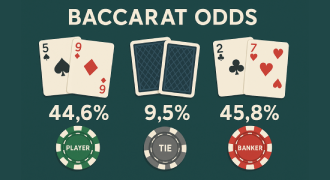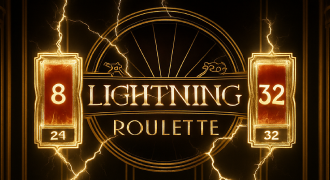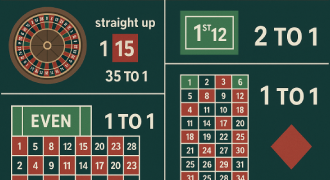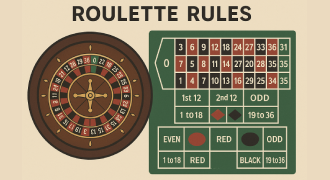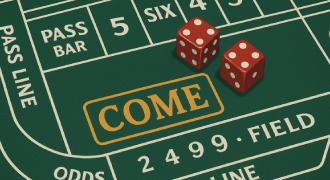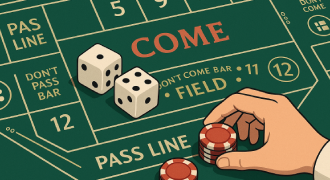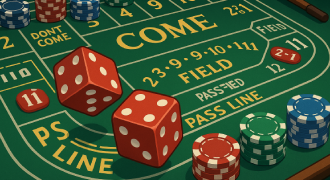Poker Games
Whether you’re taking your first seat at a virtual table or returning to sharpen your edge, this guide maps the digital felt from end to end. You’ll learn how internet dealing and lobbies function, the core tactics that drive profit, how the experience differs from brick-and-mortar rooms, which variants attract the most traffic, what to check for licensing and security, and the practical steps to get started on desktop or mobile. Expect clear explanations, actionable tips, and simple checklists that protect your bankroll, reduce avoidable mistakes, and help you choose reputable rooms with confidence. You’ll also see how online poker games fit into today’s ecosystem.
What Is Poker Games? How It Works
At its core, poker is a contest of incomplete information, probability, and psychology played on a networked table with time-limited decisions. In poker card games played online, you sit at virtual tables through a secure client that connects you to a licensed operator’s servers. The software runs shuffles, deals, bet sequencing, timers, and side pots in milliseconds while recording every action for integrity checks.
Modern platforms categorize tables by stakes, table size, format, speed, and buy-in. You can filter cash tables, sit-and-go lobbies, or multi-table tournaments and join instantly from a desktop, tablet, or phone while browsing different types of poker games with quick filters.
Your account holds a wallet for deposits and withdrawals, with clear cashier controls and transaction histories. The operator takes a rake or fee, commonly a small percentage of cash pots or a fixed tournament entry fee, which you’ll see displayed in lobbies. These controls matter if you plan to play real money poker games.
Randomness is provided by audited shuffling algorithms that mimic real-world variance over large sample sizes. Seating tools, waiting lists, and quick-seat options help you find a table that fits your style and bankroll, and they’re distinct from video poker games that pit you against a paytable rather than human opponents.
Pros and Cons of Playing Poker Online
|
✅ Pros |
❌ Cons |
|
🏠 Play from home anytime |
🤖 Risk of bots or unfair players |
|
🎲 Wide variety of tables, stakes, and formats |
💸 Easier to overspend without discipline |
|
🌍 Access to global player pool |
🕰️ Long sessions can be tiring |
|
🎁 Frequent bonuses, rakeback, and promotions |
|
|
📚 Opportunity to practice and improve skills |
Poker Fundamentals for Beginners
Winning consistently in poker games starts with three pillars: selection, position, and pressure. Selection means choosing strong starting ranges and adding hands only when table conditions are favorable. Position means playing more hands on the button and cutoff, where you act last and obtain the most information. Pressure means using well-sized bets to deny equity and extract value, especially when you identify capped ranges or weak showdowns.
Bankroll discipline underpins all progress. Separate your play funds from everyday money and set preset stop-losses and table caps. Learn to fold even attractive draws when the price is wrong, and master pot odds, implied odds, and fold equity. Tilt control is essential: if emotions spike, take a break and reset before returning to the felt. Tracking outcomes in a journal helps you observe leaks and refine your study plan. This discipline is vital in online poker cash games where deep stacks can magnify both edges and swings.
Understanding Winning Card Combinations
In card games poker, every format ranks five-card holdings from strongest to weakest. The typical order is Royal Flush, Straight Flush, Four of a Kind, Full House, Flush, Straight, Three of a Kind, Two Pair, One Pair, and High Card. Suitedness and connectivity matter because they enable draws that can outpace top pair by the river. Board texture—paired, monotone, or coordinated—should heavily influence your continuation-bet strategy, especially out of position.
Learn blockers and removal effects to tune your bluff frequencies. Make a habit of counting combos instead of guessing, and use equity estimators during study sessions to internalize performance versus common ranges. Read the texture of the board and how it interacts with your hole cards. If you practice hand reading from preflop through the river, you’ll find more value-bet spots and fewer thin hero calls. This edge compounds across poker games.
When moving from fun play to stakes that matter, many players test themselves in real online environments to gauge decision-making under real pressure. They often start at micro stakes, where postflop fundamentals and bet sizing can be honed without undue risk; if you’re exploring games like poker, micro pools offer a low-variance sandbox to learn.
Key Differences Between Online and Live Poker
The digital environment accelerates everything: more hands per hour, faster decisions, and the ability to multi-table. Timing reads are subtle and tied to habitual patterns rather than physical cues. HUDs and built-in stats can be used where allowed, though many venues now restrict external aids to protect recreational players. Table selection is data-driven, and seat changes happen in seconds rather than minutes. These habits apply across popular poker games, regardless of your stake.
Live rooms offer tactile feedback and social energy, but online you trade that for volume, convenience, and granular recordkeeping. Live tables involve physical chips and longer orbits; online, you see slick interfaces, hotkeys, bet presets, and time banks that enforce rhythm. Rake structures also shift by format and site; always confirm fee caps and tournament add-ons before buying in so you can focus on the best poker games for your goals.
Popular Poker games Variants
Exploring variants helps you exploit softer pools and improve pattern recognition. Cash tables reward deep-stack skill, sit-and-gos sharpen short-handed tactics, and MTTs test endurance and ICM decisions. You can play poker online across traditional and fast-fold pools, and you can sample exotic formats such as mixed games or short-deck to broaden your technical base.
Texas Hold’em
Hold’em remains one of the most popular poker games, with two hole cards per player and five community streets shaping hand strength. Tight-aggressive play leverages position, isolation raises, and well-timed continuation bets. Seek reliable traffic and transparent rake at reputable sites to ensure fast seating and softer fields. Study standard preflop ranges by position, then adjust based on opponents who overfold or overcall.
Omaha
Among poker games, Omaha deals four hole cards and requires using exactly two of them, creating explosive equity landscapes and frequent multiway pots. Suitedness, connectivity, and nut potential dominate hand selection, and postflop edges come from understanding redraws and blockers. Many players enjoy practicing in private clubs to read dynamic boards before stepping into public pools.
Three Card Poker
This fast hybrid offers shallow decision trees and immediate feedback on optimal folding thresholds. It’s approachable for new players and a refreshing tempo change for experienced ones seeking quick orbits between longer sessions online. Many discover it when searching for poker games near me at local venues or mobile apps.
Platforms and Apps to Play Poker games
Traffic, software quality, and cashier reliability define the best environments. Major rooms provide stable clients, frequent updates, and robust tournament schedules. Smaller platforms sometimes offer softer games, creative promos, or niche variants that can be profitable for disciplined grinders who study site-specific tendencies. Compare deposit options, payout speed, and customer support responsiveness before you commit your time and bankroll. Platforms hosting the best online poker games tend to pair stability with deep lobbies and sensible rake structures.
Look for curated lists that rank the top rooms by traffic, security, and game selection. Independent analysts publish thorough reviews that examine rake, rewards, and software usability from a player’s point of view, and a well-organized poker games list makes it easy to find the formats you prefer.
|
Provider |
Paylines |
Symbols That Pay |
RTP |
Min Bet (USD) |
Welcome Offer |
|
SpinWorks |
20 |
A, K, Q, J, 10, Wild Joker |
96.4% |
$0.10 |
100% up to $500 + 50 free hands |
|
CardForge Interactive |
10 |
Royal Icons, Wild Crown, Scatter Star |
97.2% |
$0.25 |
200% up to $300 on first deposit |
|
NeoDeck Studios |
25 |
Ace High, Pair Emblems, Wild Dealer |
96.9% |
$0.05 |
50% up to $200 + 20 free hands |
|
Quantum Play |
15 |
Suited Emblems, Wild Pot, Scatter Badge |
97.8% |
$0.20 |
100% up to $150 on signup |
RTP, or Return to Player, expresses long-run theoretical payback as a percentage; for example, 97.2% indicates that over vast samples, $97.20 is expected to return for each $100 wagered, though short-term outcomes swing widely. Min bet values such as $0.05 or $0.20 help you right-size trial sessions while you learn each title’s volatility and feature pacing. Trial runs also help you identify the best poker games for your risk tolerance and attention span.
At this casino, private tables and quick lobbies make it easy to play and celebrate wins with friends. Private groups can schedule home-style poker games and enjoy social chat alongside the action.
Safe Online Play: Licenses and Security Measures
Trust begins with regulation. Choose operators that hold credible oversight and offer clear jurisdictional disclosures, game certificates, and dispute procedures aligned with legal standards. Regulators audit fairness, KYC, and responsible-gaming tools that let you set limits, cool-offs, and self-exclusions.
Strong sites use modern encryption, segregated player funds, and transparent privacy policies. Independent testing firms certify shuffling and payout integrity, while two-factor authentication keeps logins safe. If a platform also runs a licensed casino, verify that poker and house games are both covered by the same or compatible regulatory frameworks before depositing so your experience across poker games remains fair and secure.
Tips for Improving Your Poker games Game
Define a study/play ratio so that theory evolves alongside experience. Build preflop charts for each position and adjust against limpers, short stacks, and aggressive 3-bettors. Drill c-bet frequencies on various textures and develop a check-raise strategy that captures fold equity on boards that favor your range.
Table select by identifying high VPIP lineups, then isolate and value bet thinly against calling stations. Search trends can help you compare formats and fee structures across sites. Consistent review of session hands, especially large pots, cements leak fixes and keeps you progressing week by week.
Mobile Poker Apps: Play on the Go
Modern clients are optimized for taps and swipes, with configurable bet sliders, portrait/landscape modes, and quick-seat buttons to reduce friction. Battery savers, hand histories, and multitable options are common, though you may want to cap tables on smaller screens to preserve focus. Some apps provide practice modes like free play, no download required, so you can rehearse lines without risking your bankroll.
How to Get Started with Poker games
Create an account, verify your details, and explore the lobby before depositing. Start with micro stakes to experience flow, bet sizing, and pool tendencies. Use tags and notes to track habitual patterns such as overfolding to turn barrels or limp-calling out of position. When you’re ready to pad your roll, claim a clear and fair bonus that matches your expected volume and timeframe for release.
Common Mistakes Beginners Make
Newcomers often overplay one-pair hands, chase dominated draws, and ignore position. They sit at any open seat without scanning average pot sizes or player tendencies, then tilt when variance hits. Bankroll errors include moving up too fast or shot-taking without clear stop-loss rules. Jurisdictional awareness also matters, especially for those searching real-money options in the USA where legality varies by state.
Try Playing Poker games Today
Pick a reputable room, set conservative limits, and commit to a simple study loop: review sessions, plug a single leak, and test the fix at the same stakes. Mastery comes from steady iteration and honest post-session analysis, not from winning a single big pot. When you treat your development like a long-term project, real-money play remains engaging, challenging, and rewarding.
FAQ
Is Poker games fair and secure?
Reputable operators use audited shuffling, encrypted connections, and account protections such as two-factor authentication. Look for published certifications and clear dispute processes before you deposit.
Can I win real money playing Poker games?
Yes, but consistency requires bankroll discipline, strong fundamentals, and careful table selection. Start small, gather data, and move up only when your results indicate a sustainable edge.
Are online games dealt with real cards or RNG?
Digital tables use certified randomization that simulates shuffling and dealing. Testing labs verify that outcomes are statistically sound over large samples.
Which platform is best for beginners?
Beginners benefit from simple interfaces, micro stakes, and responsive support. Choose a room with clear lobbies, stable software, and practice modes so you can learn mechanics before raising stakes.
How do Poker games tournaments work?
You pay a buy-in and receive a fixed stack, then play through blind levels that rise on a schedule. Payouts follow a structure based on entries, and final tables reward strong ICM decision-making.
Is Poker games legal in my country?
Legality varies by jurisdiction, and rules can change. Check local laws and an operator’s license details before creating an account or depositing any funds.

